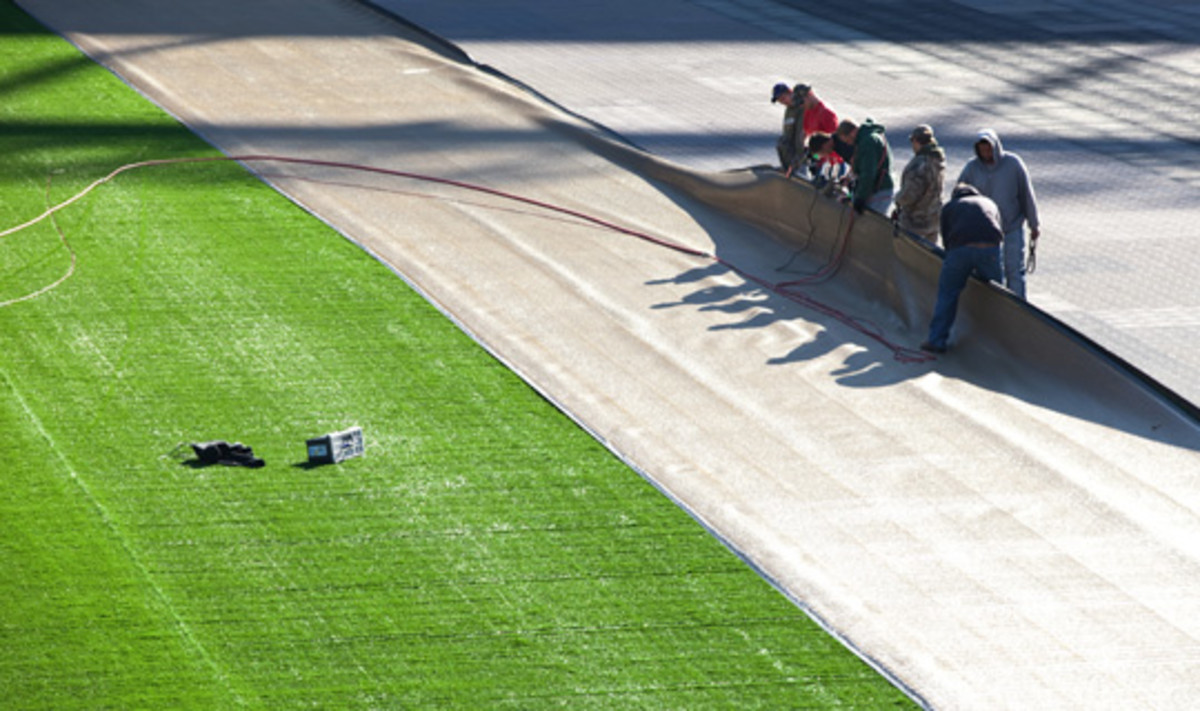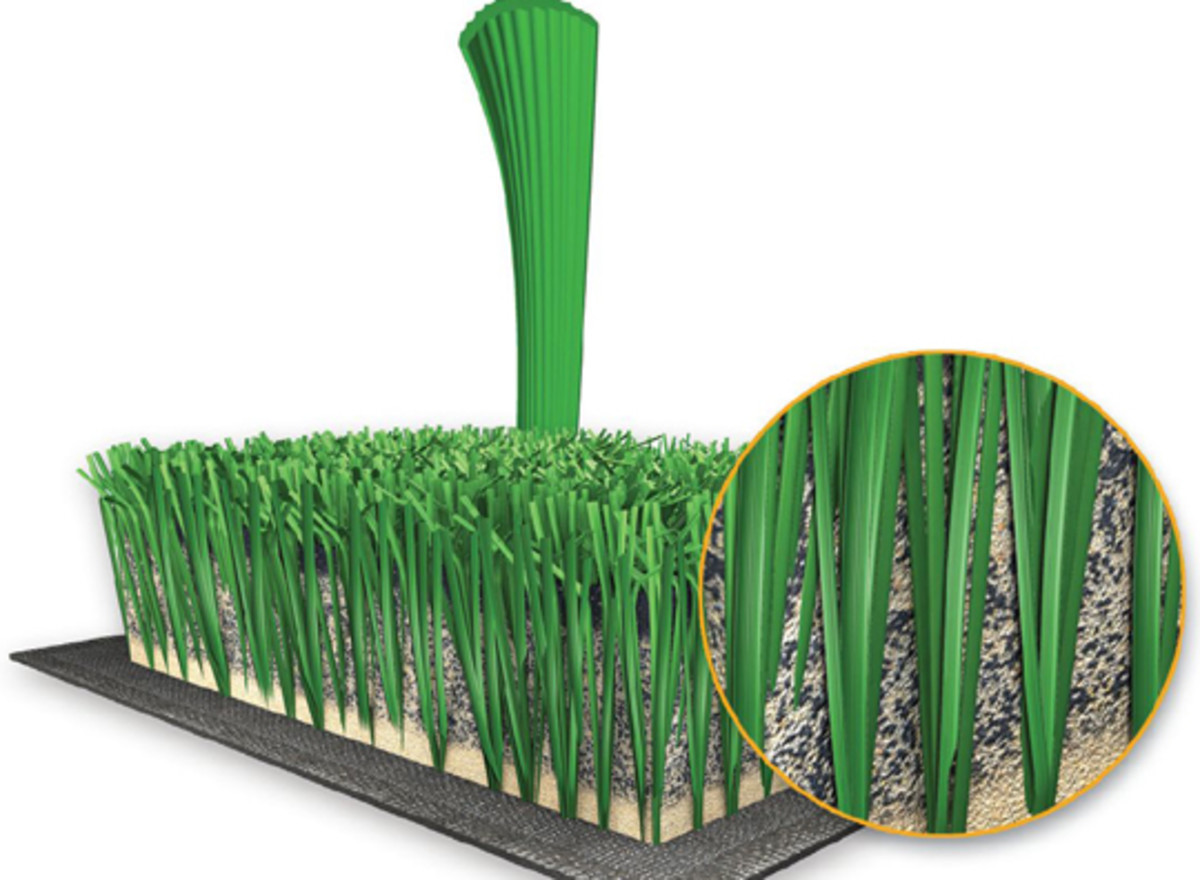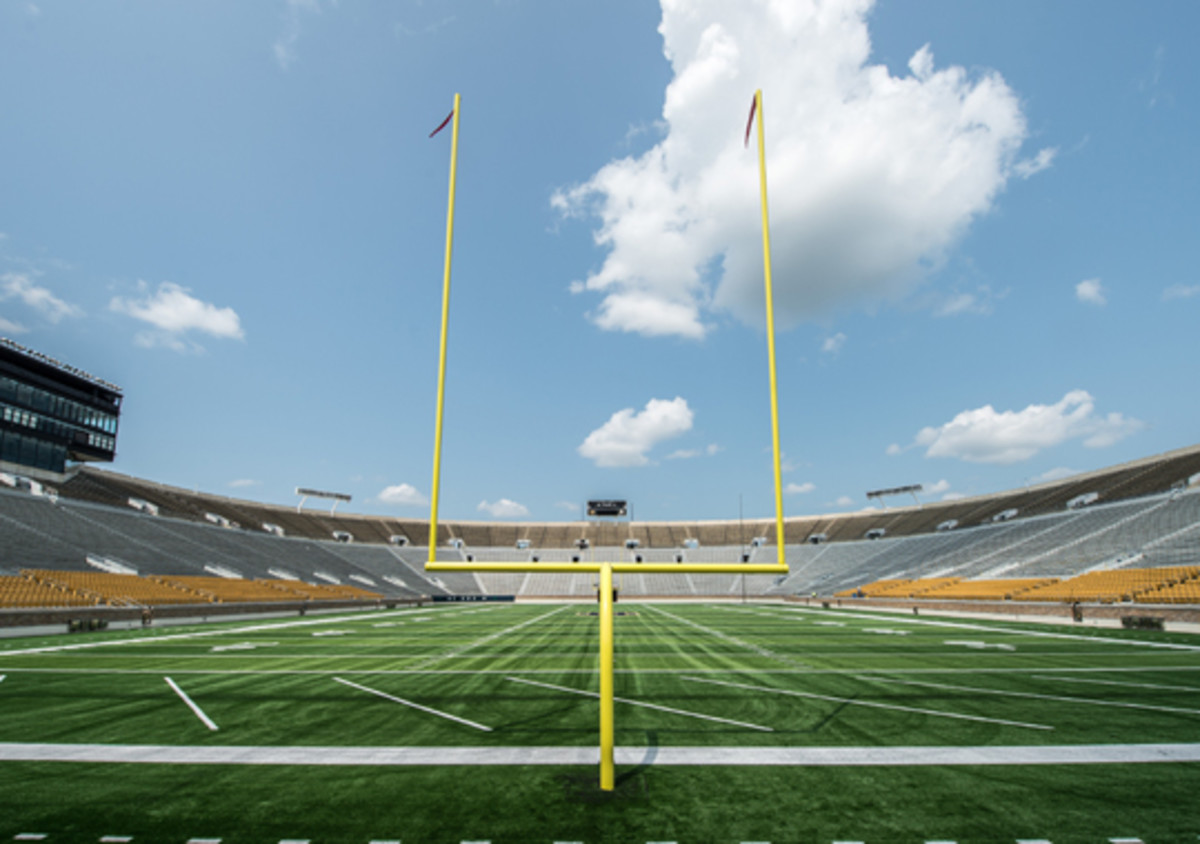Ground control: The art and science behind creating artificial turf

Think of your grandparents’ shag carpet—if you even want to admit you had shag carpeting, of course. Now replace that shag with tiny polyethylene blades. You’re starting to understand the early stages of a football field’s artificial turf.
“[FieldTurf] is made on the old machines shag carpeting were once made on,” Darren Gill, FieldTurf vice president of innovation, tells Edge. But the technology has evolved well beyond 1970s carpeting aesthetics, serving as a rival to natural Bermuda, ryegrass or Kentucky Bluegrass fields in the NFL and across the NCAA.
When natural grass won’t suffice—blame it on the weather, a domed venue or stadium owners needing to run multiple events that would rip apart natural grass—they turn to something artificial. The days, though, of AstroTurf as the lone choice are over. Even with the AstroTurf brand’s GameDay Grass, UBU Sports' popular Speed Series or even Matrix Turf, the company with the most artificial fields in the NFL is still Montreal-based FieldTurf.
While FieldTurf offers varying combinations of height, weight and fills, Gill says the process for creating and the main product remains relatively the same. In the NFL, FieldTurf Revolution serves as the key. Created by athletes, designed to “replicate natural grass,” FieldTurf left the idea of creating a better carpet. They pioneered a new type of system.
“The inventors looked at the profile of natural grass and what it delivered from safety, performance and aesthetics,” Gill says.

system with polyethylene blades spaced wider than other brands to allow a cleat the ability to dig into the synthetic infill without too much grab. “The gap, the distance between the rows, gets the athlete into the infill,” Gill says. “We want them playing in the synthetic dirt, not on top of the fibers.”
Wired for Sound: The science behind stadium audio systems
To give heft to the philosophy, FieldTurf runs at about 9.2 pounds of infill per square feet. Other products go lighter than five pounds per square foot, something easier to move in and out of a building. Gill says if you cut open a square foot of natural grass you’ll typically find about 10 pounds per square foot.
But getting the athlete’s cleat cutting in the synthetic infill requires a long process. Every field—natural or artificial—starts with a substructure. Standard across the artificial turf business, engineers develop drainage plans, using crushed stone to manage excess water away from the field. So, in Nevada that substructure will look far different than in Seattle.
Next come the rolls of carpet. FieldTurf makes their fibers in a plant in Germany and then sends the fibers to facilities throughout the world—they have sites in Spain, France, Serbia and Calhoun, Georgia—to weave the U-shaped fibers into a geotextile backing.

The early days of AstroTurf featured nylon carpeting, extremely durable, but also extremely abrasive. Now everyone—including AstroTurf’sGameDay Grass—uses a polyethylene fiber to offer a happy medium on the abrasion vs. durability pendulum.
Once a carpet leaves the facility and arrives in rolls at a stadium, the pieces get laid out and sewn together. From there, crews apply markings.
Houston Texans have no plans to make changes to playing surface
Next comes the infill. FieldTurf uses a three-layer system. The first layer consists of straight silica sand, designed to help the fibers stand up. The mid-layer mixes sand and cryogenic rubber. This layer provides the major shock absorption for the athlete. The top layer of simple rubber—a larger size than in the mid-layer mixture—protects the athletes from the highly abrasive sand. The weight of the infill—720,000 pounds for a typical sports field, 70 percent of that weight coming from the sand—works to eliminate the seams.
Not everyone mixes infill the same, as UBU Sports uses an infill of 70 percent rubber and 30 percent sand, for example.
The carpet arrives with blades 2.5 inches tall, but with a typical infill of 1-3/4 inches deep, the 848-plus million FieldTurf blades on a typical NFL field rise about ¾ of an inch above the infill. Once installed, teams can do as they please. Some will water or roll the field to harden it and give it a faster feel.
The first NFL team to play home games on FieldTurf was the Seattle Seahawks, but that was at the University of Washington’s Husky Stadium. By the time Seattle’s CenturyLink Field opened with FieldTurf, Ford Field in Detroit had already put it down. Now, about half a dozen teams have the FieldTurf system.

Sports and a smattering playing on other brands’ product, there’s one more compromise starting to take root: hybrid fields.
Belgium-based Desso has a GrassMaster hybrid system in use on Denver’s Sports Authority Field at Mile High and Green Bay’s Lambeau Field, that injects 20 million Desso artificial turf fibers—polyolefin granules get processed and winded onto cones to form blades—in a natural root system, essentially reinforcing natural grass with artificial fibers.
Inge De Busschere, Desso spokesperson, tells Edge that in a ¾-inch grid across the field, artificial fibers inject 7.5-inches deep. “The ingenuity of the system lies beneath the surface,” she says. “The natural grass roots grow around the fibers, thus anchoring the field.”
For venue owners wanting the look and feel of natural grass, De Busschere says weaving in the GrassMaster system allows the turf to handle up to three times the amount of wear and tear.
As fewer teams—less than half in the NFL—play on an exclusively living turf, let’s at least be thankful artificial field technology has evolved well beyond the 1970s shag carpet.
Tim Newcomb covers stadiums, design and gear for Sports Illustrated. Follow him on Twitter at @tdnewcomb.
